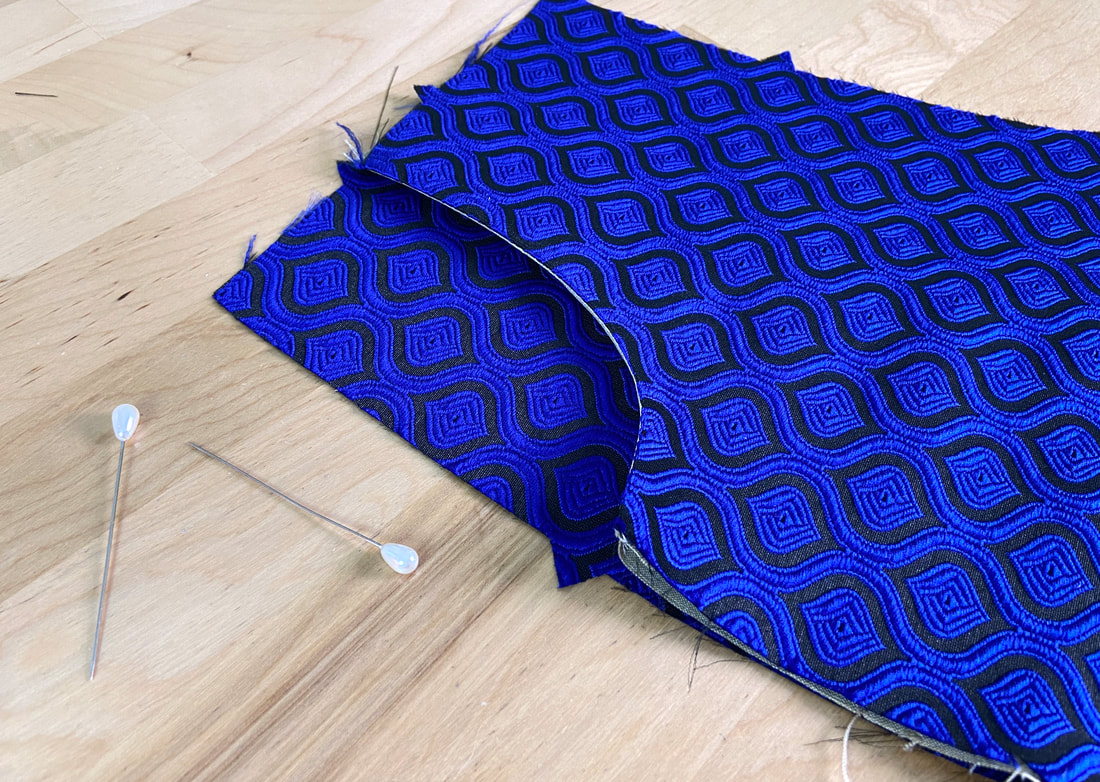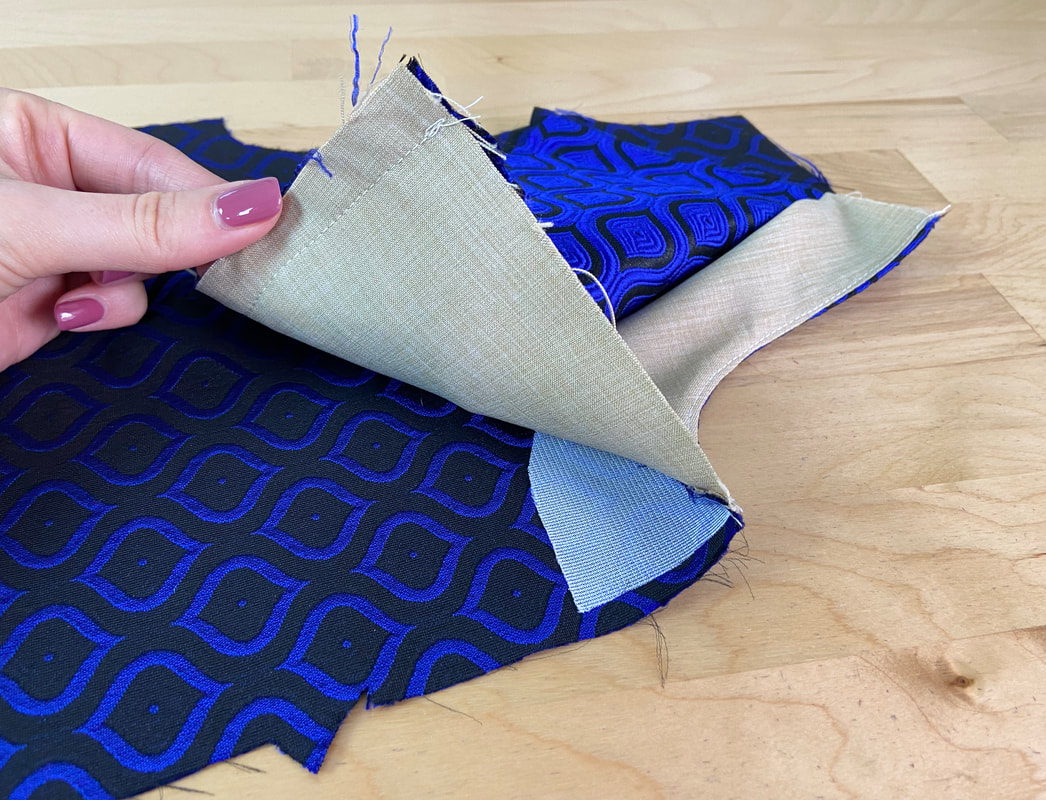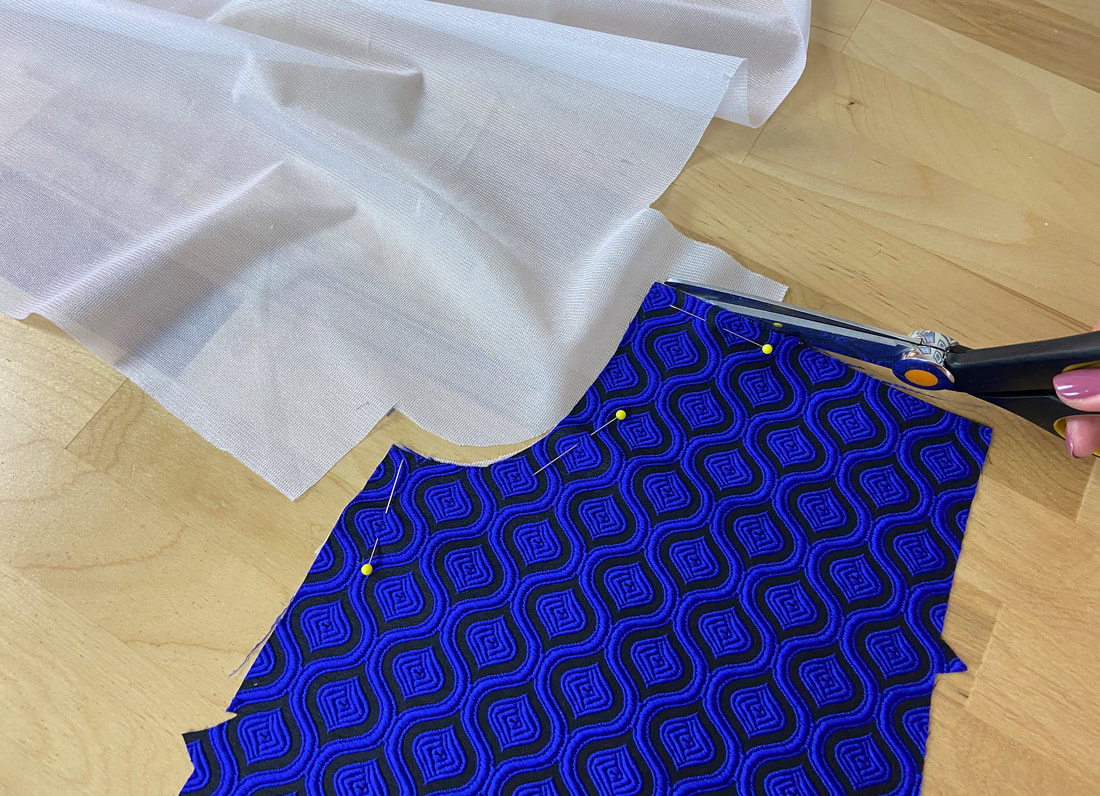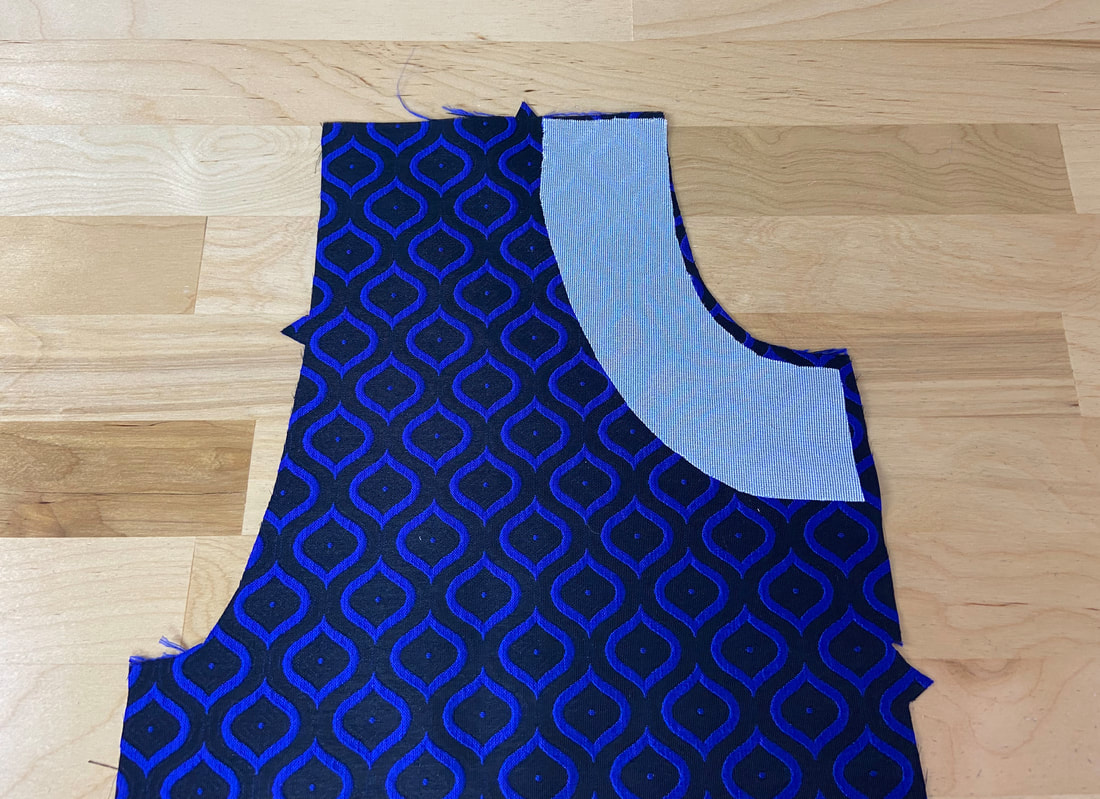The Importance Of Interfacing When Sewing Front Hip Pockets
A front-hip pocket is a structured, tailored pocket style conventionally added to bottoms like skirts, shorts and trousers. Conveniently, it works just as well with a dress if this has a waistline seam.
While this pocket application fits within a wide range of designs, you have most likely encountered front-hip pockets on the good old pair of jeans. They work just as well in a lightweight application as they do with heavy duty, thick fabrics.
A front-hip pocket's opening edge is conventionally curved (sometimes square) and should maintain its structure, strength and stability throughout the pocket's lifespan. It is this opening edge that has to withstand all the weight, pulling and pressure incurred during use.
While this pocket application fits within a wide range of designs, you have most likely encountered front-hip pockets on the good old pair of jeans. They work just as well in a lightweight application as they do with heavy duty, thick fabrics.
A front-hip pocket's opening edge is conventionally curved (sometimes square) and should maintain its structure, strength and stability throughout the pocket's lifespan. It is this opening edge that has to withstand all the weight, pulling and pressure incurred during use.
To ensure that the pocket's opening edge remains structured and does not stretch out of shape with continuous use, you should always back the garment portion with interfacing at the pocket opening edge.
Use an interfacing that works with the fabric weight at hand, and adds enough stability to ensure long-term support. A fusible knit interfacing as pictured above is highly recommended for front-hip pocket applications as it is more resilient to wear and machine washing.
Attaching the interfacing should be the first step taken in the construction process, prior to aligning and stitching the facing and finally, completing the pocket bag.
Use an interfacing that works with the fabric weight at hand, and adds enough stability to ensure long-term support. A fusible knit interfacing as pictured above is highly recommended for front-hip pocket applications as it is more resilient to wear and machine washing.
Attaching the interfacing should be the first step taken in the construction process, prior to aligning and stitching the facing and finally, completing the pocket bag.
If your pattern set does not provide the interfacing pattern, you can use the pocket opening edge on the garment to cut the interfacing portion. In the alignment and cutting process, place the garment face side up with its wrong side touching the interfacing's fusible side.
Curve the interfacing's longer edge so that it is parallel to the pocket opening edge (shorter edge corresponding to the curved garment edge). Prior to attaching the facing and completing the pocket application, fuse the interfacing to the wrong side of the garment as pictured above.





